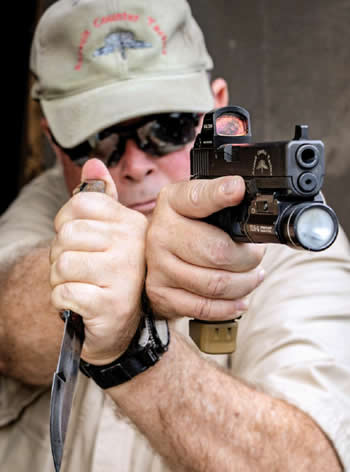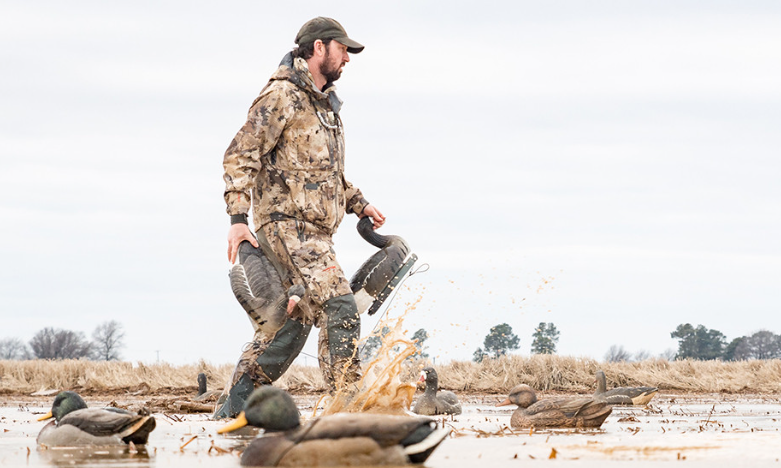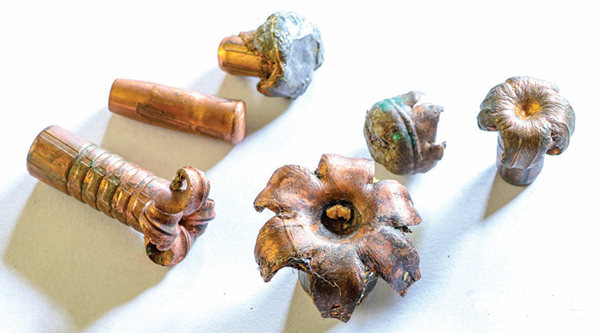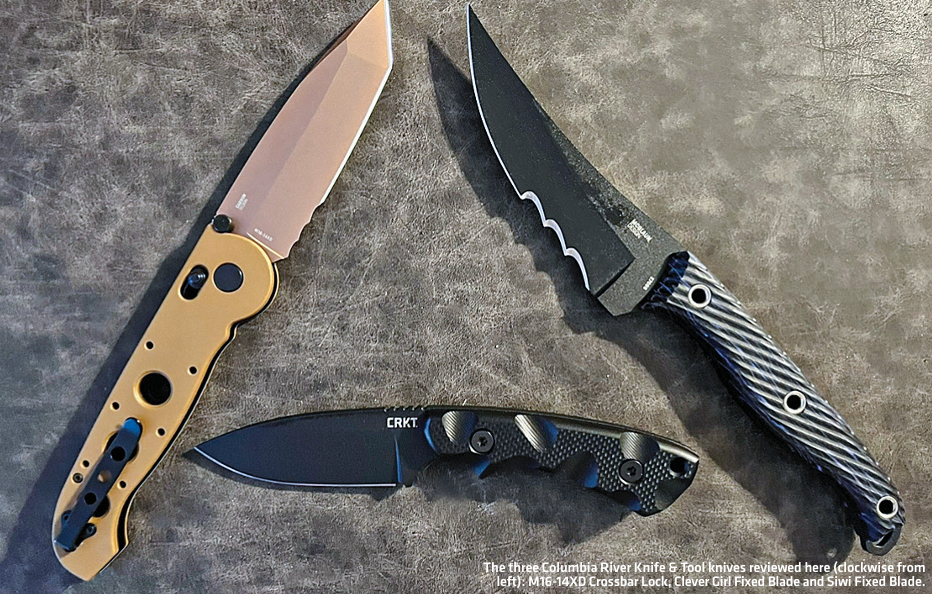From mindset to situational awareness, mental to physical health, here’s what it boils down to.
Story and Photos by Paul Pawela
The late Jeff Cooper, known as the father of modern pistol craft, has many books on the subject. In Principles of Personal Defense, he asserts that the most important means of surviving a lethal confrontation is neither the weapon nor the battle skills. The primary tool is the combat mindset.
Cooper came up with a color code identifying the four levels of awareness: white (unaware and unprepared), yellow (relaxed alert), orange (specific alert), and red (ready to use lethal force). The color code helps one “think” in a fight. As the level of danger increases, one’s willingness to take certain actions increases.

- • You have to stay calm when you are in bad situations.
- • You need to cover and conceal your intent with other maneuvers.
- • You need to utilize the simplest and most effective methods.
- • You need to prioritize your focus effort.
- • You need to train until you trust yourself to move intuitively, without having to think.
- • You cannot let your emotions drive your decisions.
- • You have to establish a good base foundation to build upon.
- • You have to continuously learn new techniques while reinforcing the fundamentals.
- • You have to adapt your plan if circumstances change.
And more to the point, no matter what the evolutionary sophistication of weapons and their means of delivery become, there is and always will be the need to face the rigors, the danger, the reality and the finality of man-to-man combat. Whether it be facing an armed intruder in your home, an active shooter, in a robbery or a terrorist hiding in the next room, the need for an individual civilian, a police officer or a soldier to be willing to fight tooth and nail against an evil entity, cloaked in the guise of a fellow human being, will remain with us as long as man continues to walk the planet.”

Second is physical fitness. Push yourself to the ultimate limits so that you are in the best shape possible. Look at the all-time greatest fighters – Bruce Lee, Joe Lewis, Chuck Norris, Rickson Gracie, Mike Tyson, and especially our Special Forces soldiers – and see what kind of shape they are in.
Get both empty hands training (including boxing and grappling) and weapons training (edged weapons, First aid and driving skills should be implemented, as well as a thorough understanding of the laws of judicious use of deadly force.
None of these concepts are new. In the earliest formation of our country, it was considered negligent by law to go about your daily business unarmed (or untrained). Self-protection was not just a personal responsibility; it was the duty of the community.
The founding fathers included the Second Amendment in the Bill of Rights for three main reasons: 1) self-protection, 2) community protection, and 3) protection from government tyranny, both foreign and domestic. This is why we train! So, as my mentor Ernest Emerson says, “Train like a mad man and fight like a demon!” And that is my two cents.
Editor’s note: For realistic self-defense training, see assaultcountertactics.com. Author Paul Pawela is a nationally recognized firearms and self-defense expert.











